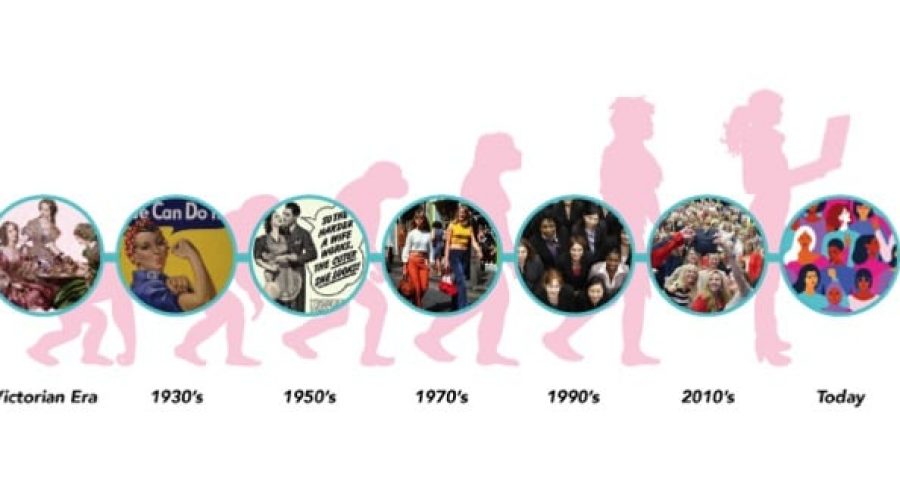It’s Equal Pay Day in Australia and we’re celebrating being paid the same as men for the same work. But it’s a bit of a fizzle when you consider that many women remain underpaid and undervalued at a national level.
At a global scale, the gender wage gap – which typically measures the wage difference between full-time working men and women, stands at 23%.
In Australia, the gender gap is about 14.1% – which is a 25 year low – despite it being 50 years since the signing of the Equal Pay Act in Australia.
The biggest contributors to the gap remain career breaks to care for loved ones, a lack of women in higher paying leadership roles and the impact of unpaid work.
Women also continue to dominate middle of the range paying and “caring” industries such as Health and Education, where their skills are undervalued relative to other higher paying sectors like Mining and Information Technology.
The level of focus that women place on caring can also be seen in the unpaid work imbalance.
In 2017, the average woman in a relationship, with or without children, did a total of 59.5 hours per week in both paid and unpaid work, which is 4% more than the total 57.2 hours of the average man, according to analysis of the Household, Income and Labour Dynamics in Australia (HILDA) Survey for the June quarter Financy Women’s Index.
For some women, like Sharen Page finance and project officer of economic Security4Women, this gender imbalance in unpaid work feels like she is like “living four other people’s lives.”
“My husband is pretty good and does the dishes, vacuums, the washing, so it’s pretty balanced.
“But now that my kids are in their early 20s, their lives are so busy that I often feel like I’m bending over backwards all the time to help them manage their lives as well as mine. It’s exhausting, but I would not have it any other way” said Ms Page.
Research shows that Australian women have been largely doing the bulk of work as a total of paid and unpaid hours per week for much of the past 15 years.
What’s more, analysis of the total sum of paid and unpaid work, shows that women are spending 62.6 per cent of their time doing just unpaid work, while men are doing 37.8 per cent of unpaid work.
According to Deloitte Access Economics, if a dollar figure were attached to the unpaid work performed by Victorian women alone, then it would be equivalent to 50% of Victoria’s Gross State Product (GSP) in the 2017- 18 financial year.
The gender imbalance in unpaid work, which includes indoor and outdoor house work, family organising and caring for children, is often attributed to choice, necessity as well as social, cultural and family dynamics.
Whatever the reason, the imbalance in unpaid work often means that women are more likely to occupy insecure jobs, earn less than men and retire with less in superannuation.
But is the answer to not bending over backwards at work and home simply saying No?
Or should we start putting a dollar figure on our time in unpaid work and multiplying it by an appropriate hourly rate?
“Placing a dollar value on the contribution of women at home is not as straight forward as calculating a yearly salary or an hourly rate,” said Jo Masters chief economists at Chief Economist Ernst & Young Oceania.
“Such a calculation is fraught with complications including the fact that most women earn less than men.
“If we looked at the issue by simply examining the cost of outsourcing tasks such as cooking and cleaning we are then missing the value of experiences for example the joy of being a parent.
“Rather than looking at the economics the conversation should really be more about how you share responsibilities so that you are both fulfilled – it is not a black and white discussion for anyone,” said Ms Masters.
Danielle Dobson, who is a leadership coach, speaker and author, as well as a Mum of three boys says she used to run herself into the ground trying to do absolutely everything for everyone, particularly in her previous marriage.
But these days she thinks differently and sharing the load is key to her sanity.
“My current partner and I really share the load and it works. We work as a team. And my sons are also part of the team.
Ms Dobson adds that the idea of “having it all” is a myth of perfection and so too is the notion of choice.
“Sometimes when we saying that women are their own worst enemies or it’s a choice, then it just constantly gets put back on women.
She has five tips that can help women who are struggling with the feeling that they are doing too much in both paid and unpaid work.
1. Understand the gender code you have subconsciously bought into. Most women, based on their gender training and societal norms have been programmed to care for others before themselves, so question if this makes sense for you and if feeling hyper responsible for everyone and everything is how you want to continue to live?
2. Believe that you actually come first, rather than always second. It is a mindset shift. Caring for others does not equate to doing everything for others so finding your unique sweet spot is crucial.
3. Understand that if you invest in your own capacity and manage your energy levels in the most appropriate way for you, that you can be so much more for everyone else in your life, particularly your children.
4. If you are in a relationship, then talk to your partner and assign tasks so that everyone is sharing the load.
5. Build capacity in your children to contribute to the family mission.













